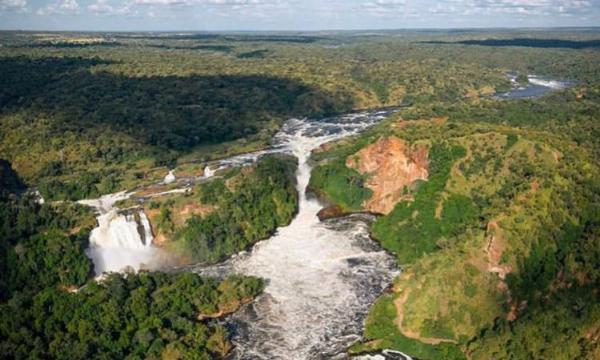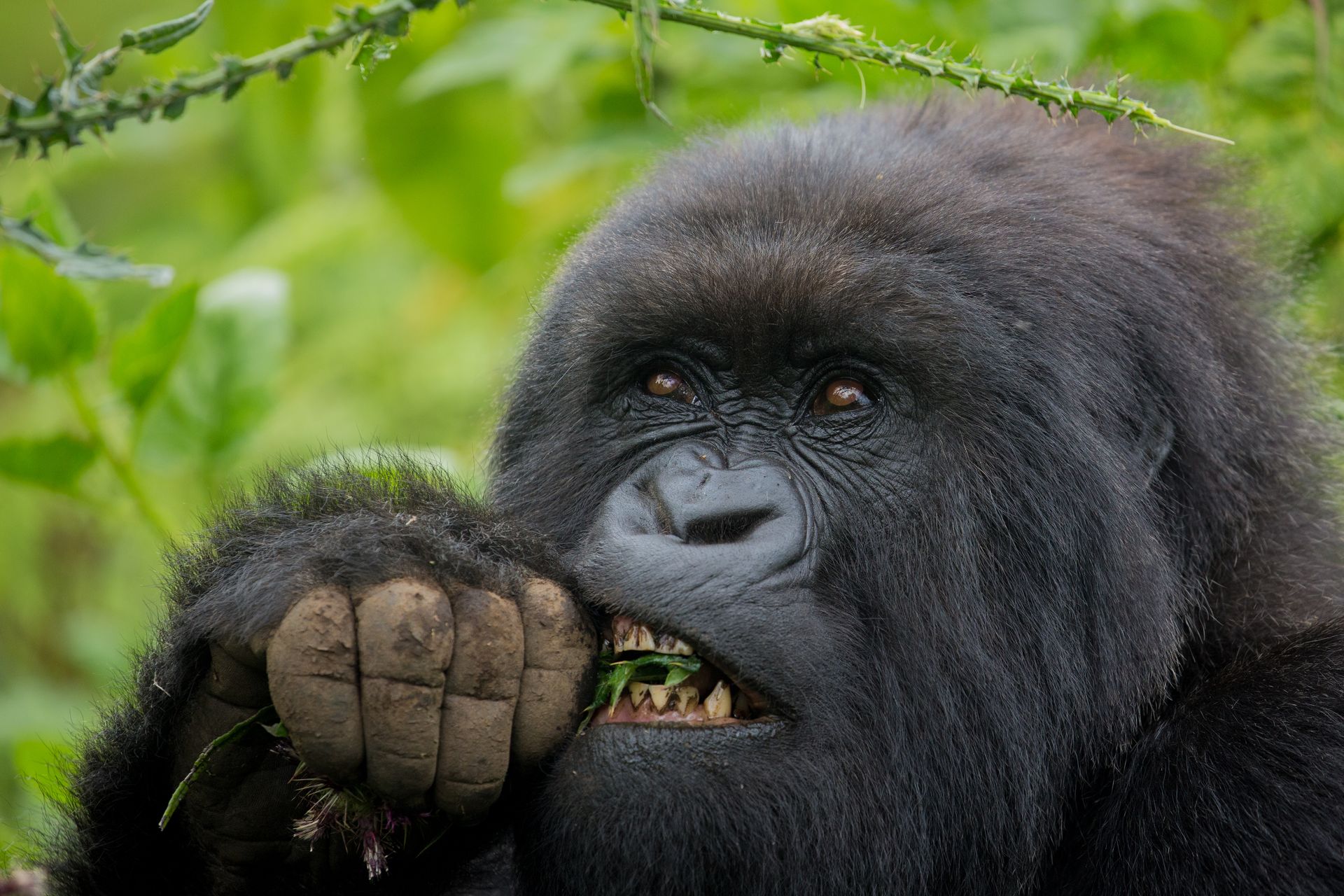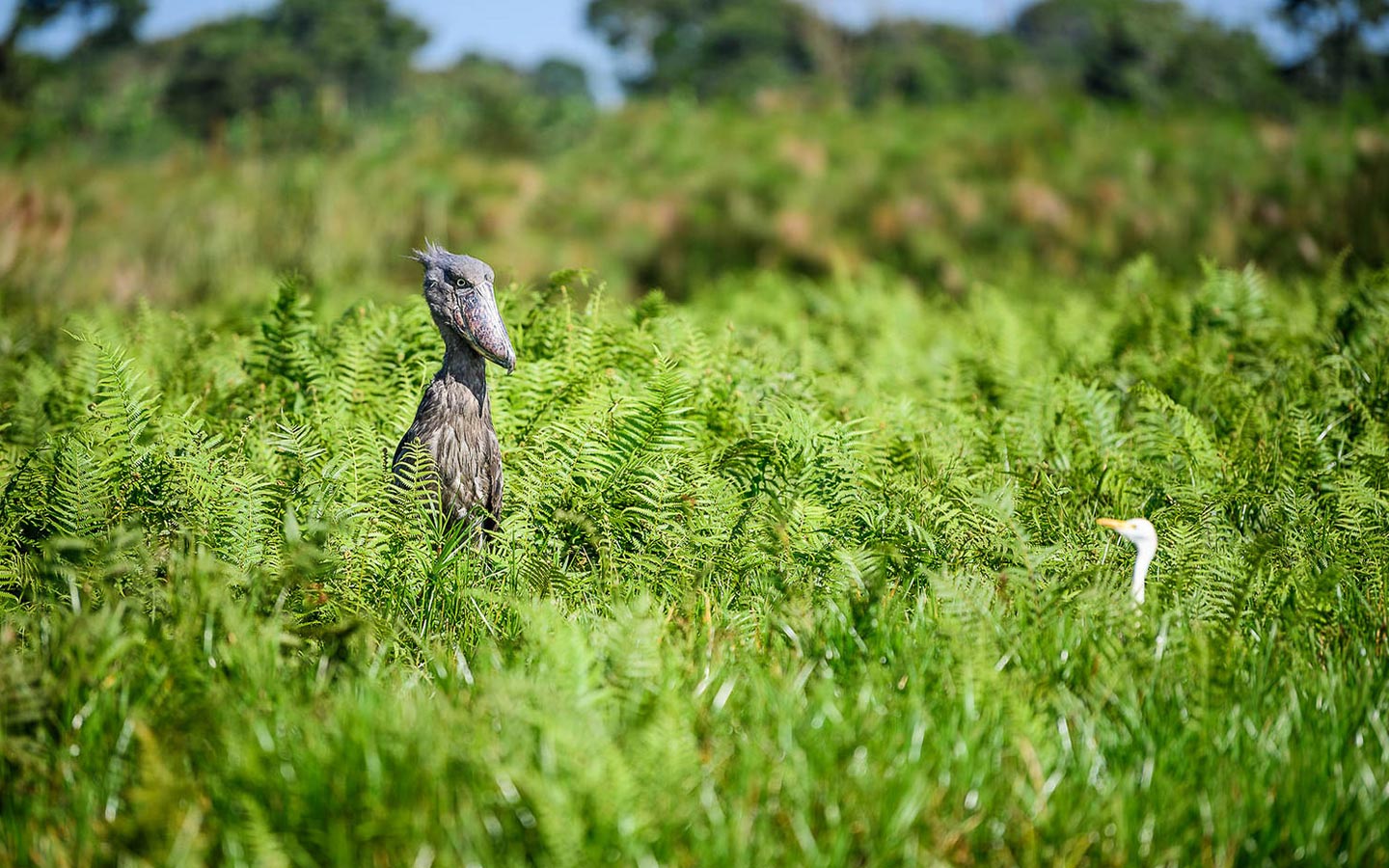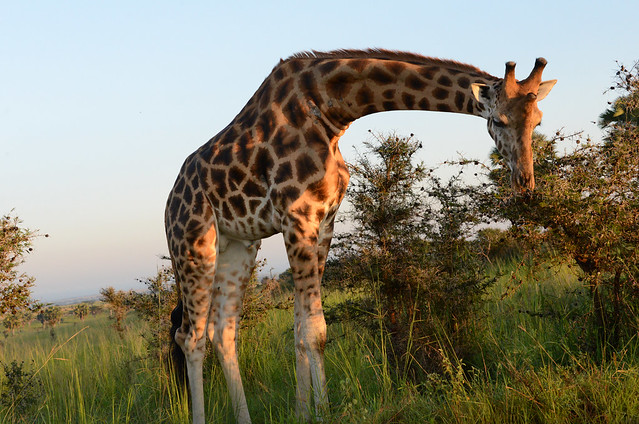Budongo Forest in western Uganda
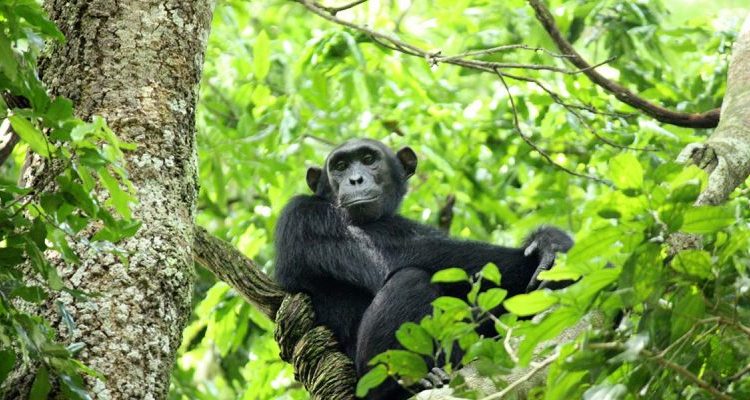
Introduction
Budongo forest is currently a forest reserve situated northwestern region of the country about 244 kilometers from Uganda’s capital city Kampala and known to be a significant part of Murchison Falls National Park. This forest is located the escarpment northeast of Lake Albert covering some parts of Masindi, Hoima and Kikuube. Budongo forest has an area cover of 825 square kilometers making it Uganda’s largest natural forest and popularly known for its former abundance of East African mahogany trees as well as being a home to a population of chimpanzees. This forest is a water catchment for Lake Albert with four streams namely Waisoke, Sonso, Kamirambwa and Simba that drain the forest as water flows into Lake Albert. Budongo forest is made up of six forest blocks that is Siba, Kaniyo-Pabidi, Waibiri, Biiso, Busaju and Nyakafunjo. Currently recorded from Budongo forest are more than 360 bird species, over 465 tree species, 20 amphibian species, 292 butterfly species, 130 moths and 24 mammal species of which 9 are primates including chimpanzees and others include bushbucks, jackals, forest elephants, buffaloes and many more.
The history of Budongo forest reserve dates back to the era of the Bunyoro Kings who protected the forest to be their Royal hunting grounds before formal conservation efforts. The Kings only gave permission to their local chiefs to hunt in this forest and no one else within the Kingdom would be allowed. The name of the forest “Budongo” originates from a Bunyoro dialect that means “fertile soils” reflecting on the forest’s rich and diverse ecosystem known for its abundant wildlife and numerous tree species. This forest was officially designated to a forest reserve in 1932 by the British Colonial Administration although timber extraction activities had begun as early as 1910. This Colonial government implemented a system of forest management including the reservation of the forest for timber and allocation of rights to various groups. Research on chimpanzees in the forest begun in 1962 with Vernon Reynolds being the first researcher to study chimpanzees in this forest where he eventually founded the Budongo Conservation Field Station. Other pioneer field researchers of this forest include Jane Goodall and Adriaan Kortlandt. In 1970s and 80s a civil war raged in the country with an accompanying breakdown of law and order. Multiple chimpanzee mothers were shot to death and several infants taken from the forest and smuggled to collectors in Europe, Asia and America. During this hard time, the forest also served as a refugee for Polish refugees. Later on in 1990, Reynolds returned to Uganda to determine whether a viable population of chimpanzees still existed in Budongo forest. Some 50 individuals had been identified by 1995 and this figure remained constant until 2000 when the numbers started increasing most probably due to influx of chimpanzees from other areas. Buildings that had been earlier on constructed for the Budongo Sawmills Ltd were renovated and occupied by the Research team. In 2005 funding for the project was provided by the Royal Zoological Society of Scotland at the Edinburgh Zoo and a number of other sources. The Budongo Forest Project therefore became a Ugandan Non-Government Organization and was renamed the Budongo Conservation Field Station. However chimpanzees were initially terrified of humans due to the civil wars which totally made the habituation process very lengthy. Therefore the Budongo Conservation Field Station continues to research and conserve chimpanzees in Budongo forest with funding from various Organizations such as the Jane Goodall institute and the Edinburgh Zoo.
Attractions in Budungo forest
Chimpanzees and other primates
Budongo Forest is a home an estimated population of between 600 to 700 individual chimpanzees making it one of the densely populated chimpanzees in the country. Chimpanzees in Budongo are divided into multiple communities with some of them being habituated for research, eco-tourism and tracking which allows visitors to track and clearly observe them in their natural setting. There are several communities of chimpanzees that have been habituated by the Budongo Forest Conservation Field whose key role is to study and conserve the local chimpanzee population in the forest. One prominent chimpanzee community known as the Kaniyo-Pabidi group is easily accessed by visitors and trackers since it is fond of foraging around the Budongo eco-lodge. Other primates in the forest include the black and white colobus monkeys, olive baboons, red-tailed monkeys, blue monkeys, grey-checked mangabeys as well as nocturnal primates namely pottos and galagos.
Bird species
There are more than 360 species of birds that roam the canopies of Budongo forest. The bird checklist includes 60 west or central African bird species known from fewer than five locations in East Africa for example the yellow-footed flycatcher that is often associated with ironwood trees, and has not been recorded elsewhere in the country. The forest houses several bird species that have been recorded from only one other East African forest other than Budongo and these include the Ituri batis, chestnut-capped flycatcher, black-eared ground thrush, white-thighed hornbill and the lemon-bellied crombec. Other bird species that can be spotted in this forest include African dwarf kingfishers, chocolate-backed kingfisher, blue-breasted kingfisher, crested guineafowl, crowned eagle, Abyssinian ground hornbill, yellow-crested woodpecker, white-spotted flufftail, Sabine’s spinetail, puvel’s illadopsis, plain greenbul, olive-breasted greenbul, little green sunbird, grey-headed sunbird, Cassin’s spinetail, Cassin’s hawk-eagle to mention but a few.
Tree species of up to 465 different tree types
Budongo forest is known as the largest mahogany forest in East Africa featuring several tree species such as the Entandrophragma and Khaya. An exceptionally large mahogany tree can still be spotted in this forest which is more than 80 meters tall and over 20 meters in circumference. Other dominant species include ironwood like the Cynometra, mixed forest trees like the Aningeria altissima, Chrysophyllum, ficus, Alstonia, Boonie, understory species like the Lasiodiscus mildbraedii, Funtumi, forest margin species like the Albizia, Sapium ellipticum, Cordia, Acanthus arboreus, Maesopsis eminii among other notable tree species.
Other wildlife species
Budongo forest is a home to several other wildlife species other than primates and bird species and these include several mammal species like forest elephants, buffaloes, bushbucks, jackals and others, over 20 amphibian species such as the tree frog, ridged frog, puddle frog, river frog and others, up to 292 butterfly species, 130 moth species that positively contribute to the overall biodiversity of the area and may more other species.
Tourist activities in Budongo forest
Chimpanzee trekking in Budongo Forest
Budongo forest is one of Uganda’s best destinations for chimpanzee trekking which is the forest’s major tourist activity that draws nature and wildlife enthusiasts into this majestic forest. Chimpanzee trekking starts with a briefing about the dos and don’ts of this activity from the information center at Budongo Eco-lodge. Ranger guides lead trekkers into the forest through the forest’s well established trails ready to encounter a habituated troop of chimpanzees as well as several other primates and forest bird species. An hour is guaranteed to visitors close to the chimpanzees as they clearly observe their social interactions such as grooming, feeding, playful infants and other behaviors. This activity lasts for about an hour to 4 hours depending on how far the chimpanzees might have moved in search for food. The success rate of encountering chimpanzees in Budongo forest is still very high only bettered by Kibale National Park.
Chimpanzee habituation
Chimpanzee habituation is known as the process of making chimpanzees get used to human presence which makes them readily available for trekking. This process lasts for a period of about two years for each and every chimpanzee group. This chimpanzee experience involves following after a group of chimpanzees where visitors learn about their behaviors with the guidance of researchers and armed rangers. Unlike chimpanzee trekking, chimpanzee habitation lasts the entire day starting very early in the morning from when the chimpanzees leave their nests until in the evening when they construct other nests for them to spend a night. This is the best option for visitors interested in learning more about the chimpanzees.
Bird watching
Budongo forest is arguably one of the best bird watching destinations in the country. Bird watching is done with the help of experienced bird guide to help bird watchers identify several bird species and a ranger for security. Bird watching is done in two shifts one starting very early in the morning until afternoon and the other done throughout the afternoon hours until evening though there is a possibility for bird watchers to spend the whole day out on a bird watching excursion in Budongo forest. One of the best areas for bird watching within the forest is the Royal mile in Busingiro area that extends from the main research section to a forestry college nearby. Bird species to lookout for during bird watching in Budongo forest include the yellow-footed flycatcher, Guinea-Congo forest biome, illadopsis puveli, Nahan’s francolin, Cassin’s hawk eagle, white-thighed hornbill, forest flycatcher, Jameson’s wattle-eye to mention but a few.
Nature and forest walks
Nature walks are done through the forest’s walking trails being accompanied by armed rangers as you lookout for the forest’s biodiversity. A variety of species are spotted like tree and plant species for example huge and tall mahogany trees that date back over 50 years ago, primates, butterflies, birds, amphibians other large mammals like forest elephants, buffaloes, bushbucks to mention but a few. The best place for nature walks within the forest is the Kaniyo-Pabidi eco-tourism center and several others as recommended by your ranger guide.
Best time to visit Budongo forest
Budongo forest can be visited at any time of the year though the best time is during the two dry seasons of the year in the months of June to September and December to February. During this period of the year, there are less or no rainfall received implying that the trails are dry and passable compared to when they are extremely muddy and slippery during the rainy season. The vegetation cover is sparse allowing visitors to easily trek through and spot several wildlife species unlike during the rainy season when the forest is very thick making it hard for wildlife viewing. However, the rainy season is the best time for those interested in bird watching since the forest has plenty of food and fruits for forest dwellers which also attracts several other migratory bird species from other countries like the Democratic Republic of Congo and many others.
Note: IndiBlogHub features both user-submitted and editorial content. We do not verify third-party contributions. Read our Disclaimer and Privacy Policyfor details.



